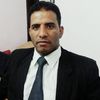The movement of Al-Houthi has emerged in some districts in Sa’ada province, Yemen in 1993. Besides, the movement of Sunni Salafi sect was founded by Sheikh Muqbil bin Hadi al-Wadae in Dammaj, Sa’ada province in 1979.
First, the clash was increased between Houthis Zaidi and Sunni Salafi in the province of Sa’ada early in mosques and public places. There are different views in their ideologies. They do not accept tolerance, co-existence and plurality. All of them opened religious centers for teaching their ideology and culture. Many tribal men and children from Amran, Hajjah, Sa’ada and al-Jawf joined these religious centers. Hence, the sectarian clash started between Shia Zaidi and Sunni Salafi.
It seems that the clash between Shia Zaidi and Sunni Salafi started early before the unification. However, after the unification, Sunni Salafi rejected democratic election and this was a part of its ideology. Furthermore, the Houthi movement rejected to participate in the political process. Each sect imagines that it is in a right track and the others in a wrong track. This radical ideology leads them to commit criminal acts against each other. In my point of view, these sects did not understand Islam well.
We appreciated that since North and South Yemen were united into a single state in 1990, Yemeni central government took steps toward establishing a more democratic regime in a challenging environment. However, this government has failed to achieve democratic regimes because of corruption, political and traditional conflict and other reasons.
Moreover, it is clear that poverty, illiteracy and tribal culture, religious ideology, political reasons and ignorance and lack of public awareness helped the radical movements to widespread in the province of Sa’ada. All these local factors helped the movement of al-Houthi to spread over the province of Sa’ada and some parts of Amran governorate. In addition, some of the tribal leaders helped the movement of Sunni Salafi to open new centers in Sa’ada, Sana’a and some districts in south Yemen. In fact, the former regime supported the clash between the movements of al-Houthi as a Zaidi sect, and Sunni Salafi sect to save his power. There are also some regional reasons which helped these extremist movements to widespread in Yemen.
It is extremely painful to see these radical movements rule Yemen. These radical movement and traditional intellectuals do not understand that we live in 21century. Consequently, tribal conflict, ignorance and civil war destroyed everything in Yemen.
In conclusion, tolerance and peace are the best choice for ending up this damned war and living peacefully. Therefore, Yemeni people will not see peace and stability without tolerance. George Clooney says “Peace is a fulltime job. It's protecting civilians, overseeing elections, and disarming ex-combatants. Peace, like war, must be waged.” John Lennon emphasizes that “If everyone demanded peace instead of another TV set, then there'd be peace.” Nelson Mandela stresses that “Courageous people do not fear forgiving for the sake of peace.” Yemeni people are looking for peace instead of a civil war and we hope that.
Adel Doshela is a Yemeni researcher and freelance writer, currently writing his Ph. D. in English Literature. Follow him in tweeter: @DoshelaAdel
